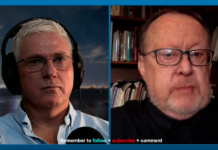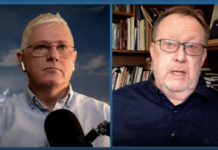Source: The Conversation (Au and NZ) – By Adrian Beaumont, Election Analyst (Psephologist) at The Conversation; and Honorary Associate, School of Mathematics and Statistics, The University of Melbourne
As well as the election for the full House of Representatives, there will be an election on May 3 for 40 of the 76 senators. The 72 state senators have six-year terms, with half of them up for election every three years. The four territory senators are all up for election with each House election.
In a double dissolution election, all senators are up for election, but this election won’t be a double dissolution. State senators elected at this election will begin their six-year term on July 1.
The six states are entitled to equal representation in the Senate, so each state has 12 senators. This system greatly overrepresents Tasmania relative to its population. The ACT and Northern Territory have two senators each.
Senators are elected by proportional representation in their jurisdictions with preferences. At a half-Senate election, with six senators in each state up for election, a quota is one-seventh of the vote, or 14.3%. For the territories, a quota is one-third or 33.3%. Half a quota on primary votes (7.1% in a state) is usually enough to give a party a reasonable chance of election.
Voters will be instructed to number at least six boxes above the line or 12 below the line, but only one box above the line or six below is needed for a formal vote. Preferences are voter-directed, with the group ticket voting system scrapped before the 2016 election. Owing to exhausted votes, the final seats in states are likely to be filled on less than a full quota.To become law, legislation must pass both the House and Senate in the same form. With the Senate’s proportional representation, it’s very unlikely to be under government control, so governments need to negotiate with other parties to pass their legislation through the Senate.
Party standings and seats up for election
The Coalition holds 30 of the 76 total senators, Labor 25, the Greens 11, One Nation two, the Jacqui Lambie Network (JLN) one, the United Australia Party (UAP) one and all others six.
During this term, Lidia Thorpe defected from the Greens, Fatima Payman from Labor and Tammy Tyrrell from JLN. As all three are state senators who were last elected in 2022, none will be up for election until 2028. The Coalition also lost two senators to defections (Gerard Rennick and David Van) – both were last elected in 2019 and will be up for election this year.
Other than the ACT and NT seats, the seats up for election were last up in 2019. At that election, the Coalition won 17 of the 36 state senators, Labor 11, the Greens six, One Nation one and Jacqui Lambie one.
The Coalition and One Nation combined won four of the six Queensland senators. In Tasmania, Labor and the Greens won three seats, the Liberals two and Lambie one. All other states were tied between the left and right blocs.
In the 2022 election, Labor and the Greens combined won four of the six Western Australian senators, Tasmania once again went three Labor and Greens, two Liberals and Tyrrell from JLN, and the other states were tied between the left and right. The state senators elected in 2022 are not up for election.
The four territory senators elected in 2022 will be up for election. In 2022, the ACT split one Labor and one for independent David Pocock, the first time its senators had not split one Labor, one Liberal. The NT is expected to once again be one Labor, one Country Liberal Party.
Here is a table of Senate seats up for election in 2025. I have ignored the defections of Rennick and Van from the Coalition in Queensland and Victoria. The good news for the left is that only Pocock’s ACT seat looks winnable for the right.
Left-wing parties likely to gain Senate seats
For either the left or the right to win four of the six senators for a state, they need to win nearly four quotas of votes or 57%.
The Poll Bludger’s BludgerTrack by state for the House currently gives Labor a 51.9–48.1 lead in New South Wales, a 52.1–47.9 lead in Victoria, a 56.4–43.6 lead in WA and a 54.7–45.3 lead in South Australia. The Coalition leads in Queensland by 52.7–47.3.
On these vote shares, NSW, Victoria, Queensland and SA would be tied 3–3 between the left and right, while the left would probably repeat their 4–2 win in WA from 2022.
A 3–3 split in Queensland would be a gain for the left from the right, as the right are defending a 4–2 split from 2019. A 4–2 win for the left in WA would also be a gain, as WA was 3–3 in 2019.
Tasmania doesn’t have enough polling to be included in BludgerTrack. But analyst Kevin Bonham, who is a Tasmanian, believes the likely outcome is two Labor, two Liberals, one Green and one to Lambie, the same as in 2019.
There haven’t been any ACT Senate polls, but cities are becoming more left-wing, and the ACT is just a city. In 2022, Labor won the ACT by 67.0–33.0 in the House, a 5.3% two-party swing to Labor. It’s plausible that any Trump-inspired backlash against the Coalition will be strongest in the ACT, so it may be difficult for the Liberals to regain their ACT Senate seat.
If Labor and the Greens gain Senate seats in Queensland and WA, Pocock retains in the ACT, and there are no other changes to the left-right balance, the new Senate would have 38 seats for Labor and the Greens, 33 for the Coalition, One Nation and UAP, and one each of Pocock, Lambie, Thorpe, Payman and Tyrrell.
It’s increasingly likely that Labor will win the House election. Labor and the Greens are likely to increase their Senate numbers. If Labor and the Greens hold 38 of the 76 Senate seats after the election, Labor would only need one more vote to pass legislation supported by the Greens but opposed by right-wing parties. The five others are mostly left-wing, so this shouldn’t be difficult.
Candidate nominations down from 2022
Candidate nominations were declared last Friday. The Poll Bludger said Saturday that there will be 330 total candidates for the Senate, down from 421 in 2022. The total number of groups (above the line boxes) dropped from 151 to 118.
Victoria has the most groups with 20, Queensland has 19, NSW and WA 18, SA 16 and Tasmania 12. With only two vacancies each, the ACT has seven groups and the NT eight.
![]()
Adrian Beaumont does not work for, consult, own shares in or receive funding from any company or organisation that would benefit from this article, and has disclosed no relevant affiliations beyond their academic appointment.
– ref. Labor and the Greens likely to gain Senate seats at the election – https://theconversation.com/labor-and-the-greens-likely-to-gain-senate-seats-at-the-election-253937







